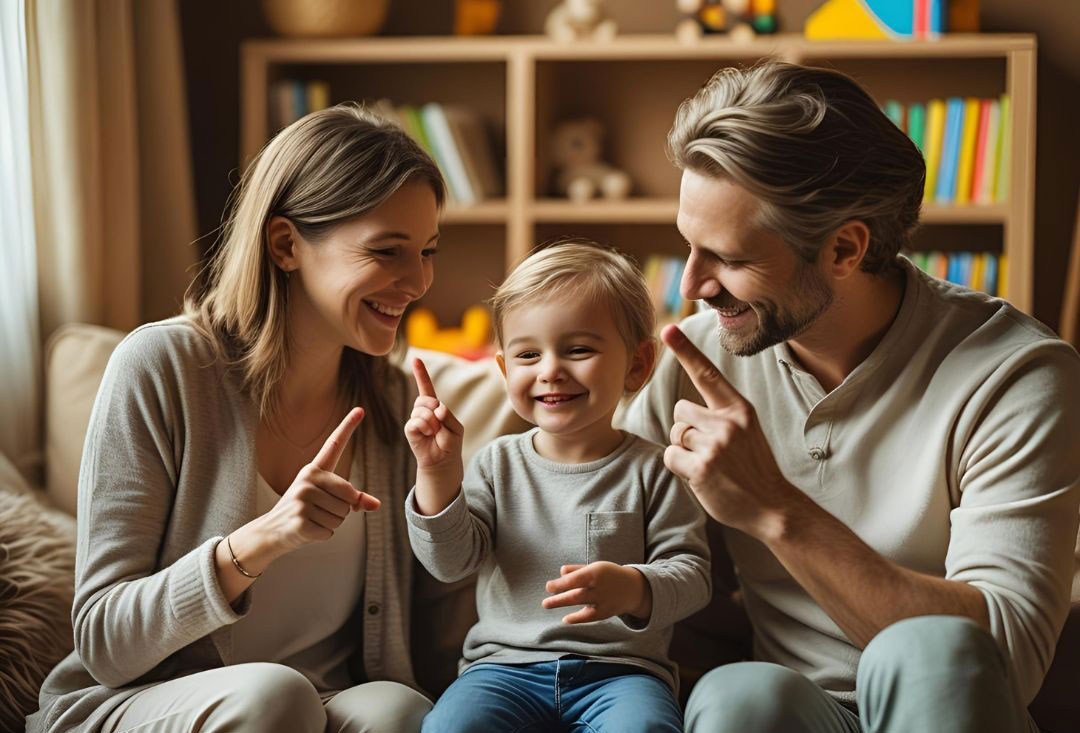Life with a Deaf Child: The Talbots’ Journey to Communication
When Nita and Lewis Talbot’s daughter, Alaina, was 6 months old, they discovered she was completely deaf.
Early Realization and Challenges
“We probably knew something was wrong with Alaina when she was 4 months old, because when I ground coffee beans every morning, she never startled, but I think we were in denial at first,” says Nita Talbot, 39, of San Juan Capistrano. “It was a hard blow for us.”
After tests confirmed deafness, Talbot was saddened by the realization that their daughter would never hear such simple pleasures as wind blowing through trees.
“I didn’t even let myself think about how the deafness would affect her personal relationships,” Talbot says. “That thought was too painful.”
Relocation for Alaina’s Future
For the Talbots, having a deaf daughter was life-changing. When Alaina was born, they were established in the community of Mammoth Lakes and doing well professionally and personally. No nearby services for deaf children existed, however, so despite their love of the Mammoth Lakes area, they decided to move to Orange County, where Alaina could attend a school for the deaf.
“If we had stayed in Mammoth Lakes, our daughter would have grown up truly isolated and alone, thinking she was the only deaf person in the world,” says Talbot, now an educational sign language interpreter. “We wanted her to have a chance to become literate and reach her potential.”
Alaina’s Success Story
The Talbots’ dream for their daughter, now 10, has come true. Although she started out in deaf classes, Alaina, with her sign language interpreter, has attended the “hearing side” of her school since first grade. Now in fifth grade, she reads far above her grade level and plans to go to college.
“We gave up a lot, but it was worth it,” Talbot says. “We were able to give our daughter the biggest gift–a command of the world around her. Now her future is almost limitless. The experience has also made us draw closer as a family.”
The Challenges of Having a Deaf Family Member
Nine percent of the population age 3 years and older is deaf or hard of hearing, according to the U.S. Department of Health and Human Services. There are several causes for hearing loss, including heredity, meningitis, chronic ear infections, rubella during pregnancy, CMV (cytomegalo inclusion virus), and Rh blood factor. Sometimes the cause of deafness is unknown.
Whatever the cause, having a deaf family member has its challenges, says Esther Zawolkow, co-founder of the S.E.E. Center for the Advancement of Deaf Children in Los Alamitos.
“When someone is deaf, communication is challenging and puts a big burden on the family,” Zawolkow says.
Effective Communication with Deaf Children
“People don’t realize how much effort each connection with your deaf child takes,” says Talbot, who signs and speaks to her daughter.
“If you want a well-adjusted deaf child, you need a lot of time and a supernatural amount of patience. Whenever you communicate, you must connect face-to-face and make sure your message is understood. You can’t just yell something across the room.”
Despite the challenges she and the rest of the family have faced communicating with Alaina, Talbot says she feels very close to her daughter.
“Because we must connect every time we communicate, I have a wonderful, rich relationship with Alaina,” Talbot says. “The deafness has taught me how to really listen to her without being distracted, and I know she appreciates my efforts.”
Alaina’s Perspective
Alaina agrees. “I’m glad I can communicate with my parents and sister, because it makes me feel like part of the family, and I love them all very much,” she said through sign language interpreted by her mother.
Communication Approaches for Deaf Children
Some children, like Alaina, are completely deaf and need sign language to communicate. Others may have residual hearing and find lip-reading possible.
The S.E.E. Center encourages families to use a total communication approach, which includes sign language, speech training, and lip-reading. Even when a child can lip-read, signing is still valuable for the family.
“When family members sign, it opens up all kinds of doors for communication,” says Zawolkow. “Without their own language, deaf children feel isolated. When the family can communicate through signing, deaf children are exposed to the world around them and learn the way hearing children do.”
Growing Interest in Sign Language
Although not every family member knows signing, an increasing number of people are learning the language, says Zawolkow. “Our sign language classes are always full. Parents, siblings, grandparents, and other extended family often attend.”
Case Study: The Rosen Family
Larry Rosen’s son, Christopher, 7, has very little hearing but is able to lip-read well. The family also uses sign language to communicate.
“When we discovered that he was deaf at age 2, we decided it was best to use all modes of communication so we could give him every possible advantage,” says Rosen, 45, president of the S.E.E. Center and a professor of psychology at Cal State Dominguez Hills.
Rosen’s family learned to sign to communicate with Christopher, including his grandmother, who was in her 70s at the time.
Additional information can be found in “How to Raise a Deaf Child”, available at many bookstores.

